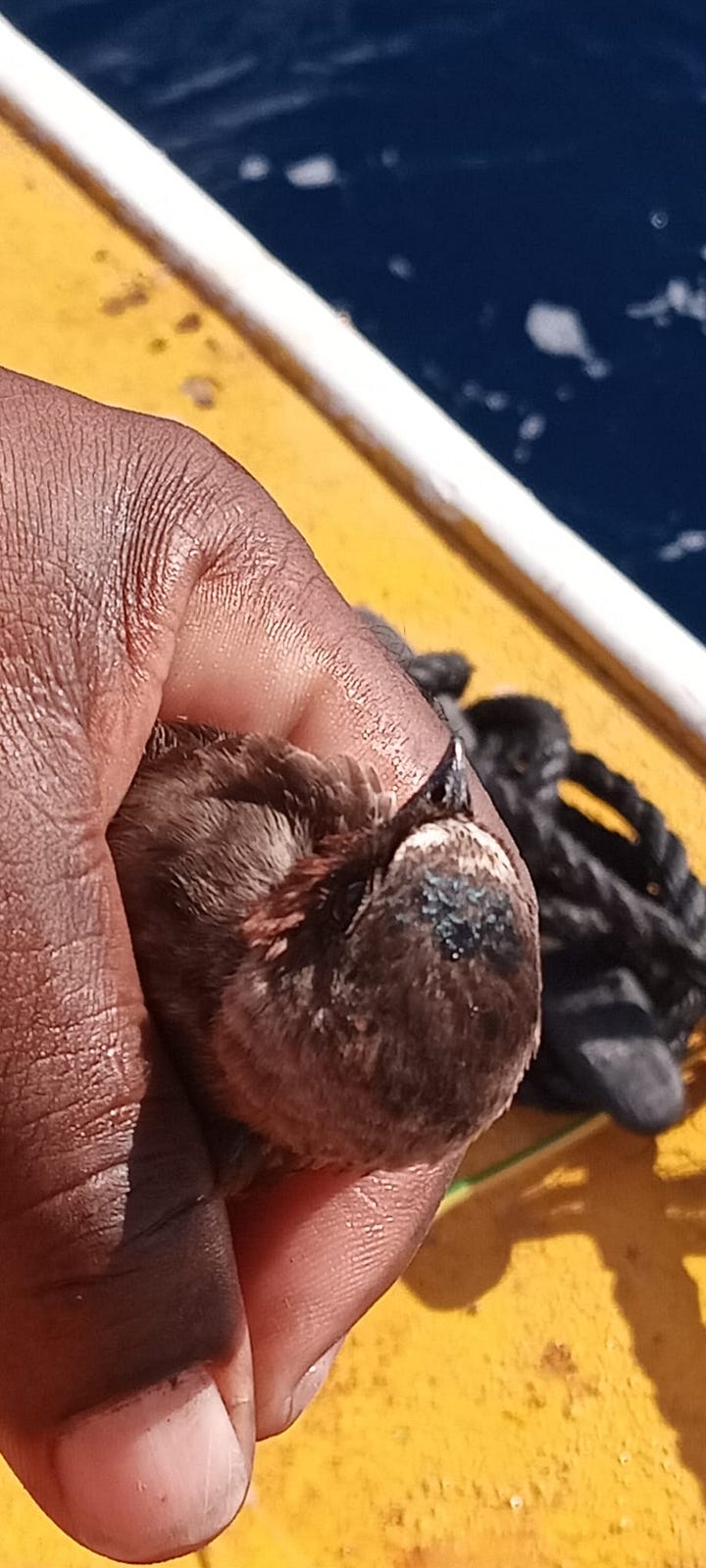The story of an exhausted bird hitching a ride on a ship during migration is as old as time. From seabirds to raptors, they have all found themselves seeking respite at one time or another.
This weekend, my friend and fisherman Patrick Webster had a special experience on his vessel “Opportunity” some 22 miles north of Anguilla. He recounted that he had been fishing for snapper from early morning on December 15th. He was “alone in the boat until he wasn’t!” Out of nowhere, he was joined by the bird seen in the photograph above.


Unfazed by the boat noise or human presence, this exhausted bird was happy to hang out and rest.


This little soul spent almost an hour aboard the boat with Patrick. He noted that the bird flew off to the north, and returned shortly thereafter. Eventually, it flew toward Anguilla.
Merlin identified the species as a Cliff Swallow based on the pictures that Patrick shared. But what was it doing out in the middle of the ocean alone? This enquiring mind wanted to know.
Knowing I had not seen a Cliff Swallow in Anguilla, I headed to eBird to see if anyone else had. I found only one record from a sailboat moving between Bermuda and St. Martin. The details are displayed using Google Maps in the graphic above. As you can see the location is pretty far north of Anguilla and Sombrero. Again, this was a record of a single bird.
Patrick’s bird was seen just north of Anguilla as shown on the eBird map below.
This makes this instance only the second eBird record of a Cliff Swallow in and around Anguilla. It is a rare species for us. The two locations are indicated on this map.
The species overview is as follows:
“The Cliff Swallow is one of the most social landbirds of North America. These birds typically nest in large colonies, and a single site may contain up to 6,000 active nests. Cliff Swallows originally were birds of the western mountains, where they still nest underneath horizontal rock ledges on the sides of steep canyons in the foothills and lower elevations of the Sierra Nevada and Rocky and Cascade mountains. In the past 100 to 150 years, these birds have expanded their range across the Great Plains and into eastern North America, a range expansion coincident with the widespread construction of highway culverts, bridges, and buildings that provide abundant alternative nesting sites. New colonies continue to appear each year in areas where Cliff Swallows were previously unrecorded as breeders.”
Based on the distribution map and the migration overview below, this individual was likely on the way to South America for the winter.
“Migrates from breeding range to winter range via Mexico, the Central American isthmus, and northern South America, staying east of the Andes. Apparent migrants are also recorded rarely in Bahama Islands, Cuba, the Lesser Antilles, and Virgin Islands (American Ornithologists' Union 1998a, Feldmann et al. 1999). It is not known whether any intraseasonal movement occurs within the wintering range, although the species probably is nomadic at that time.”

This lone Swallow was lucky to find “Opportunity,” which it needed to recover and continue its migration.
Thank you, Patrick, for sharing this special experience and providing a haven for this beautiful migratory bird.










Fantastic story! I loved reading it: Thank you Jackie!
Nice to see this tired swallow seized the “Opportunity”. Love this story😊